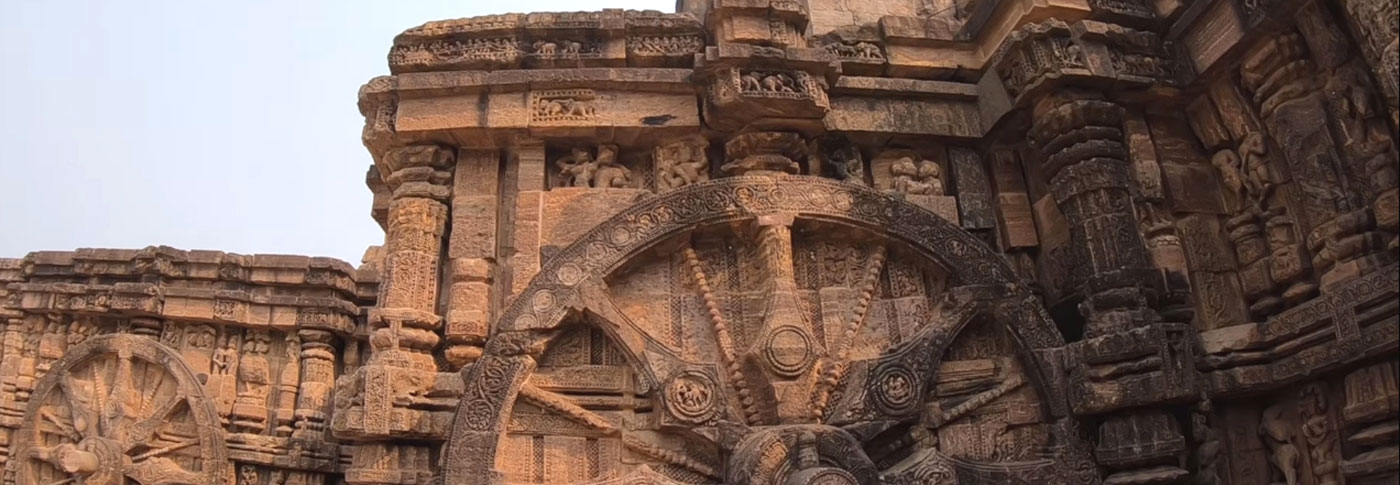

Various theories have been propounded regarding the purpose of selecting the site and erection of such a mammoth monument at Konark. There are many legends of Konark that tell us a lot about the construction, existence as well as the origin and history of Konark.
Since the time of Mahammad Ghori, Orissa was raided several times by the Muslims, but the Hindu kings of Orissa could resist them definitely for a longer period. The Hindus were aware that it would be rather impossible for them to tackle with such a warrior nation and to drive them permanently out of their their country. Still they went on taking aggrasive parts in such a way, that they could delay the Muslim occupation in Orissa, for about two centuries more.
By the middle of the 13th century, when the Muslims had conquered the whole of the northern India and most parts of neighbouring Bengal, there was hardly any power which could check their advance and it was thought that the Hindu Kingdom of Orissa would soon be overrun by them. At that time Narasimhadeva I started taking the offensive against them.
After the death of Sultan Iltutmish, in 1236 A.D., the throne of Delhi remained week for sometime, when Nasiruddin Mahammad succeeded him and appointed one Tughan Khan, a Governor of Bengal. A great fight took place between the Muslim army, under the said Tughan Khan and Narasimhadeva I, at Katasin, in the year 1243 A.D., where the former were completely defeted and ran away. The heavy loss of lives in this war was so severe. Narasimhadeva's victory in this war must have enormously enhanced his prestige in the eyes of the contemporary Hindu Kings and as such, he wanted to build a temple to represent both, a shrine and a Kirti-Stambha (victory-memorial) to commemorate his victory according to his royal status and prestige.
 Purpose of Building Konark at this Place
Purpose of Building Konark at this Place
The beauty of the Sun-rise and the roaring voice of the sea charmed Narasimhadeva since his early life. The river chandrabhaga which is now dead, was once flowing within a mile to the north of the temple site and was joining the sea. On its banks, existed flourishing towns and important trading centres. Trade was carried on with foreign countries as well, by sea routes, as there was no better communication other than the river in those days.
Narasimhadeva had preferred the place for his proposed temple, for not only enabling him to bring his building meterials from different places by the said river, but the sanctity of the was also considered by him. In this connection there is an interesting legend which says that, once Samba, the son of Sri Krishna, incurred the displeasure of Narada. Who revenged himself by getting Samba afflicted with leprosy.Ultimately, when Samba, was found innocent, he was advised to practice penance in the Maitreyi forest for 12 years, to please Surya(Sun God) to cure him of his disease. He acted accordingly and after the prescribed period the Sun appeared before him and asked to recite the twenty-one different names of the deity. Next morning when Samba was taking his bath in chandrabhaga, his hands came in contact with something in the water. He immediately lifted it up and saw an image of Surya (Sun God) standing on a lotus pedestal, holding two lotuses in his both hands. He carried the image to his Ashrama (hermitage) and installed it in a temple, built by him. Samba was however completely cured, after sometime, by worshipping the deity.
In addition to the above legend, there is another legend associated with it. It is believed that in the proximity of Konark Temple, there was a pool in which once a stone was dropped by King Narsimha Deva and it was galloped by the Raghab Fish. On hearing this, the goddess Dhama got disturbed. She gave a suggestion to Sivai Santra to construct a temple by dropping stones from sides. Thus, the Sun temple is believed to have been built in this manner.
Besides the sanctity and the favourable surroundings, the presence of majestic sea eternally roaring and rolling within a striking distance, was perhaps an added attraction for them.